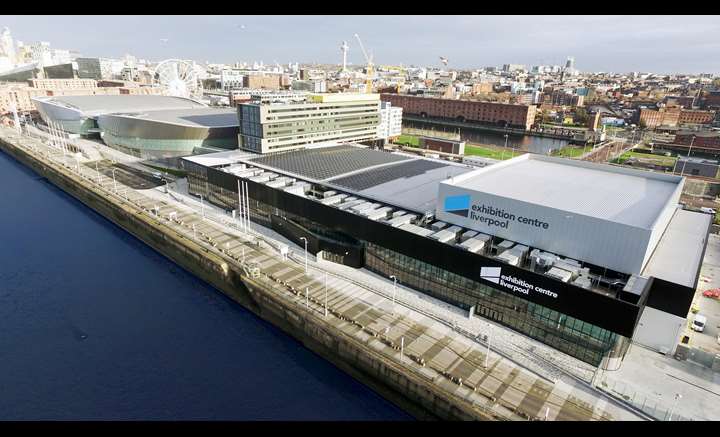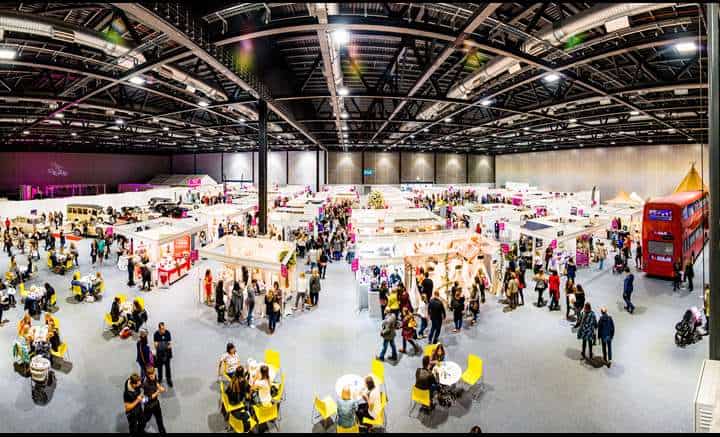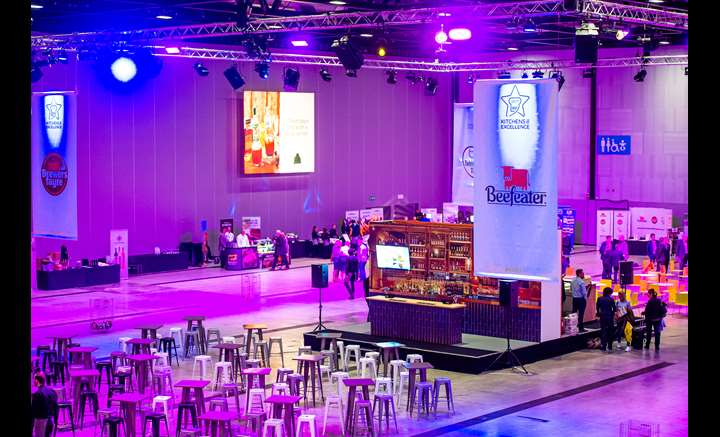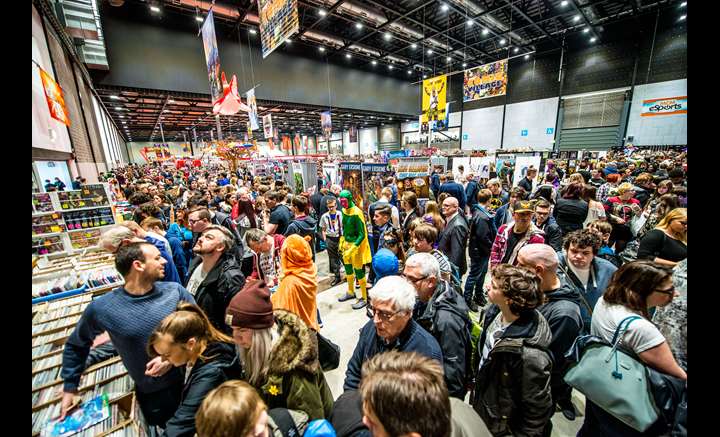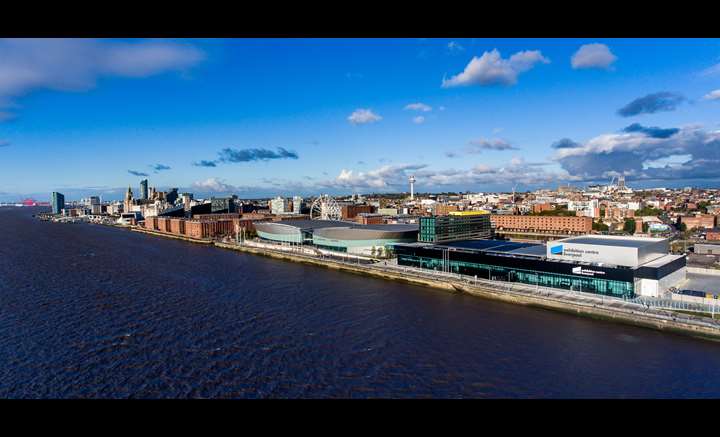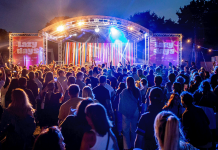Trade shows and events are complex, multifaceted undertakings where the choice of venue can make or break the experience. To gain insights from a venue’s perspective, we spoke with Brian Charity, one of the senior event managers with Exhibition Centre Liverpool, a renowned complex of exhibition venues in the UK.
Exhibition Centre Liverpool is a complex with exhibition spaces that host such events as The Manufacturer Live, Comic Con Liverpool, The Liverpool Wedding Show, The National Beauty Show UK. When I spoke to Brian he’d just been working on a show called the Liverpool Cat Extravaganza. When I asked if Cat’s were allowed to attend, he said “yes, of course! There was even a Cat Walk!”
One thing that becomes clear from talking to Brian is that the venue is just as invested in an event’s success as the organiser and exhibitors. He was full of advice and information about how a safe, secure, efficient and ultimately successful show could be achieved.
Collaborative marketing
Marketing an event is vital, and the venue can play a role in helping with this. Venue often offer marketing packages to organisers as part of the deal when hiring the venue. They typically include display space, brochure space, web presence, mail outs and e-shots which organisers can use to promote their event.
“Some clients want a dedicated marketing campaign. Some are happy to do it themselves,” says Brian, “if you’re putting on a ticketed event and you’ve picked your space then maybe you might want to invest in some sort of package, would that get you a mail shot, emails, a presence on our website and some social media activity.”
Going above and beyond, Brian and his Exhibition Centre Liverpool colleagues will try to match the marketing to the audience. “Our team will work really hard to create more bespoke, targeted marketing campaigns aimed at people who would genuinely have an interest in that type of event.”
Planning a layout
Layout planning is another critical aspect where the venue adds value. This will take into account the size of stands, proportion of shell scheme stands to bespoke stands as well as specialised data that the venue may have gathered on dwell time and footfall for different types of events within their space. They will also know how to create a manageable flow of traffic around the event, ensuring routes, rest rooms and fire exits are accessible to all.
Brian explained how their technology and expertise are capable of creating precise, custom layouts: “we have CAD technicians who can draw up any layout within an inch of the building and within an inch of the requirements.” That means the team from the venue are able to draw up a bespoke layout for events that not only makes the most of the space, but is tailored to the specific needs of the event itself.
In all areas of planning and execution it’s clear that safety is always top of Brian’s list of priorities. Layout planning is no exception: “The main requirement is to make sure the event is safe. Through conversation with the client, we start to learn about numbers of delegates, delegate movement and dwell time and things like that. This will allow us to adapt our plans for consumer exhibitions, things like a comic con where it’s so busy or even party conference work.” Clearly the best outcomes arise when the organiser’s insight and the venue’s experience come together to address any layout issues ahead of time.
The exhibitor manual
At the heart of a successful exhibition experience lies the Exhibitor Manual, a crucial tool for any exhibitor venturing into an event. Brian sheds light on its significance, describing it as “essentially a Bible for all exhibitors.” This document, meticulously compiled and packed with information by the venue, serves as the primary guide for exhibitors booking a stand at an event.
Brian emphasises the comprehensiveness of the Exhibitor Manual, noting, “If you read the exhibitor manual, everything’s in there: your parking, your stewarding, your timings, everything that you need is in that manual.” It forms a detailed roadmap, offering clarity on every aspect of the exhibition process, from preparation to loading out.
The venue’s collaborative approach in creating this manual is evident. As Brian explains, “We share that information from initial conversations with our clients that help us create, or help the client create, that exhibitor manual.” This ensures that the manual is not only informative but also tailored to the specific needs of each event.
Getting the most from the manual
Additionally, exhibitor manuals for events at Exhibition Centre Liverpool serve as a guide to their bespoke online ordering system, where exhibitors can find all sorts of useful items to enhance and enable their presence at the event. That means the manual provides a single point of reference where exhibitors might learn what additional equipment and facilities they might need, plus exactly how and where they can source them.
Brian points out the crucial role of reading and understanding this manual before arriving at the event. In case of any queries, exhibitors have a direct line to assistance. “If you have any questions, you’ve got a point of contact, which is your event manager, your production manager, catering manager, you’ve got a point of contact at the venue, who’s an expert,” Brian assures. This level of support and guidance underscores the venue’s commitment to ensuring a smooth and successful experience for every exhibitor.
Accommodating special requests
While adhering to strict processes and health and safety regulations, venues like Exhibition Centre Liverpool are not rigid gatekeepers. Instead, they strive to accommodate unique and extraordinary requests to ensure events are both fun and impressive. While it might not be an unqualified “can-do-attitude,” it’s certainly a “can-do-if-the-risk-assessment-goes-OK-attitude.” Brian shared his insights with us on this delicate balance.
Surprising possibilities
Brian encourages organisers to communicate their unique needs: “You might be surprised at what can be achieved.” He cites examples like hosting barbecues, medical demonstrations, animals, and climbing walls, showcasing the venue’s versatility in managing a variety of events.
Brian recalls specific instances when exhibitors undertook activities that hadn’t been given prior approval: “I did have someone who was tattooing people on site that we weren’t initially aware of.” Similarly, an incident involving an unauthorised drone showcases the importance of prior notification: “We basically spent 10 minutes chasing the drone… Had he got the correct licences, we could have worked with him to get his drone shots.” These anecdotes underscore the venue’s willingness to facilitate diverse activities, provided they meet safety and legal requirements.
The golden rule: advance notice
The key to accommodating special requests lies in advance planning. Brian emphasises, “The worst thing to do is to turn up on the day and hope to get away with something.” Providing ample notice allows the venue to prepare and ensure all necessary risk assessments and health and safety protocols are in place.
Risk assessments are paramount. Brian explains, “provided we do that, we’re happy!” This process is crucial for both the safety of attendees and the smooth execution of the event. It’s why venues like Exhibition Centre Liverpool insist on thorough preparation and communication.
The role of good communication
Effective communication between clients and the venue is essential. “The good clients give us information,” says Brian, highlighting the difference proactive communication can make. It’s about creating a partnership where information is freely exchanged, ensuring security protocols are met and the event runs seamlessly.
Accommodating special requests is a collaborative effort requiring detailed planning, open communication, and a focus on safety. With these elements in place, venues like Exhibition Centre Liverpool can turn even the most extraordinary ideas into reality, ensuring memorable and successful events.
Safety and security: the top priority
As mentioned throughout, and with reference to every aspect of event planning and execution, health, safety, and security are the venue’s top priority at all times. Brian emphasises this point unequivocally.
“Health and safety is priority,” asserts Brian, making it clear that this aspect is non-negotiable. The venue’s commitment to safety is evident in the comprehensive training of their event management team and their adherence to established guides and protocols. Brian notes, “We work with the eGuide to ensure we adhere to the highest and most up-yo-date standards in our industry” referring to guidelines published by the AEV (The Association of Event Venues).
Exhibition Centre Liverpool doesn’t operate in isolation when it comes to safety. Brian mentions their collaboration with other venues, particularly through the NAA (National Arenas Association), highlighting a community of shared expertise. “We have good relationships with other venues and share learnings and experiences,” he says, demonstrating the importance of collective knowledge in managing safety effectively.
Security measures: attention to detail
When it comes to security, Brian underlines the importance of thoroughness, “Knowing what vehicles are arriving, when they’re supposed to be arriving, and who they are.” Such meticulous attention to detail ensures a strong security framework, guarding against any potential breaches. After all, as Brian says, “security is only as strong as its weakest link.”
He also highlights the role of clients in the safety and security process. “The good clients give us information,” he says, “I think it’s harder to appreciate for newer clients who haven’t done events with us before. It seems like we’re asking for quite a lot of stuff, but actually that information is all being disseminated to different teams for different reasons, and it’s all very necessary.”
Embracing the event
Once the planning is complete and the event is underway, Brian Charity emphasizes the importance of enjoying the moment. “The start should be when all the work is paid off,” he advises, suggesting that the opening of the doors should be the most exhilarating part of the event. His experience in entertainment and theatre reinforces this viewpoint: the real show begins when the doors open, the exhibitors are ready, and the audience arrives. This is a time for organizers to see their hard work come to fruition and to relish the experience.
Creativity and surprises on the exhibition floor
Brian also speaks to the creativity and diversity he sees in exhibition stands. From simple tabletop displays to elaborate setups resembling coffee shops or live TV studios, every event brings something new and surprising. “There’s so many stands. It’s creative, ultimately,” Brian remarks, highlighting the endless possibilities in exhibition design. He recalls particularly memorable events, like wedding shows, where the joy and excitement of attendees add a special touch to the occasion.
A responsible exit
As events draw to a close, the process of derigging becomes crucial. Brian explains the importance of a well-planned exit strategy for exhibitors. “The second that the doors open, the space essentially becomes a building site. It’s really important that people sort of work together.”
“Depending on the requirements of the client we could go into a full breakdown… or a soft breakdown,” he says, outlining the two approaches. The full breakdown involves hard hats, high visibility vests, and mechanical assistance like forklifts, while the soft breakdown is simpler, allowing exhibitors to manually clear their stands.
Tiredness and a wish to get home often drives exhibitors to rush their exit. Brian has even seen exhibitors simply walk out at the end of the event, abandoning whole stands including all of their display and promotional material. It’s important for organisers to make sure everyone cleans up though, as excessive rubbish left behind over a pre-agreed level will incur an extra charge to the organiser.
“There’s a volume of rubbish that’s included with all contracts,” says Brian, “but clients should always do their best to encourage people to take waste away or recycle.” His advice to exhibitors is practical and straightforward: “Everyone just needs to take their time. We don’t all need to run for the same door at the same time.”
Shut down, restart
Exhibition Centre Liverpool showcases remarkable efficiency with event turnarounds, often within a mere four to six hours. “We usually aim for maybe four to six hours between events,” Brian Charity reveals, shedding light on the venue’s swift operational tempo. This quick pace is crucial for accommodating back-to-back events, such as an arena show ending in the early hours and another commencing at dawn.
The venue’s ability to facilitate these rapid transitions hinges on the expertise and coordination of its team. Brian emphasises their proficiency: “Our venues team, our cleaners, steward, everybody’s so used to what they do, it’s sort of second nature.” This well-oiled machine ensures the venue is promptly cleaned, prepped, and ready for the next event.
Venue tips for exhibitors
It’s clear from speaking with Brian that certain key behaviours can go a long way to assuring trade show success for exhibitors.
- Understanding and adhering to venue guidelines, communicated through the exhibitor’s manual, is crucial.
- Proactive communication with the venue enables safe and creative stand designs, while last-minute unauthorised actions can disrupt and pose safety risks.
- Departing responsibly, without leaving a mess, helps the venue team immensely.
And ultimately, exhibitors should be sure to enjoy the process, embracing their creativity, and experiencing the rewards of seeing their vision come to life during the event. At Solopress we have plenty of inspiring options when it comes to your print needs for Exhibitions and Conferences.


